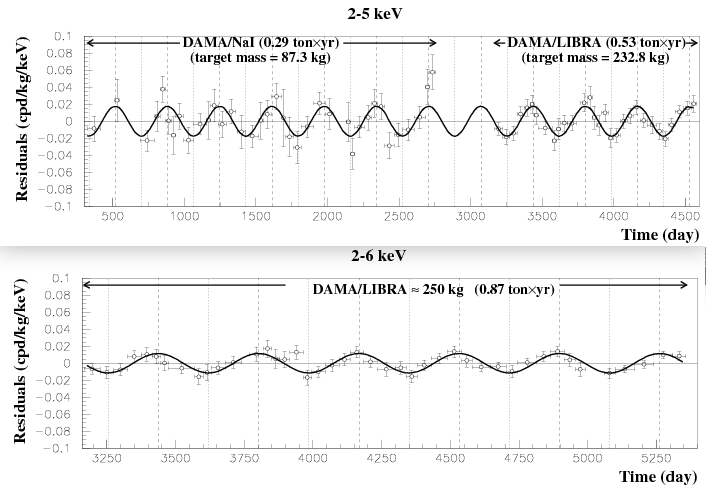 |
| Raymond Laflamme's qubit. Photo: Christina Reed. |
Due to popular demand, we included a discussion session this year. You know that I’m not exactly a big fan of discussion sessions, but then I didn’t organize this meeting for myself. Michael Schirber volunteered to moderate the discussion. He started with posing the question why quantum mechanics is almost always portrayed as spooky, strange or weird. Why do we continue to do this and is beneficial for communicating the science behind the spook?
We could just blame Einstein for this, since he famously complained that quantum mechanics seemed to imply a spooky (“spukhafte”) action at a distance, but that was a century ago and we learned something since. Or some of us anyway.
 |
| Stockholm's quantum optics lab, Photo: Christina Reed. |
We could argue it is due to our daily life being dominated by classical physics, so that quantum effects must appear unintuitive. Intuition however is based on experience and exposure. Spend some time calculating quantum effects, spend some time listening to lectures about quantum mechanics, and you can get that experience. This does not gain you the ability to perceive quantum effects without a suitable measuring device, but that is true for almost everything in science.
The explanation that came up during the discussion that made the most sense to me is that it’s simply a way to replace technical vocabulary, and these placeholders have become vocabulary on their own right.
The spook and the weirdness, they stand in for non-locality and contextuality, they replace correlations and entanglement, pure and mixed states, non-commutativity, error correction, path integrals or post-selection. Unfortunately, all too often the technical vocabulary is entirely absent rather than briefly introduced. This makes it very difficult for interested readers to dig deeper into the topic. It is basically a guarantee that the unintuitive quantum behavior will remain unintuitive for most people. And for the researchers themselves, the lack of technical terms makes it impossible to figure out what is going on. The most common reaction to supposed “quantum weirdness” that I see among my colleagues is “What’s new about this?”
The NYT had a recent opinion piece titled “Why We Love What We Don’t Understand” in which Anna North argued that we like that what isn’t understood because we want to keep the wonder alive:
“Many of us may crave that tug, the thrill of something as-yet-unexplained… We may want to get to the bottom of it, but in another way, we may not — as long as we haven’t quite figured everything out, we can keep the wonder alive.”This made me think because I recall browsing through my mother’s collection of (the German version of) Scientific American as a teenager, always looking to learn what the scientists, the big brains, did not know. Yeah, it was kinda predictable I would end up in some sort of institution. At least it’s one where I have a key to the doors.
Anyway, I didn’t so much want to keep the mystery alive as that I wanted to know where the boundary between knowledge and mystery was currently at. Assume for a moment I’m not all that weird but most likely average. It is surprising then that the headline-grabbing quantum weirdness, instead of helping the reader, misleads them about where this boundary between knowledge and mystery is? Is it surprising then that everybody and their dog has solved some problem with quantum mechanics without knowing what problem?
And is it surprising, as I couldn’t help noticing, that the lecturers at this year’s workshop were all well practiced in forward-defense, and repeatedly emphasized that most of the theory is extremely well understood. It’s just that the focus on new technics and recent developments highlights exactly that what isn’t (yet) well understood, thereby giving more weight to the still mysterious in the news than there is in the practice.
I myself do not mind the attention-grabbing headlines, and that news focus on that what’s new rather than that what’s been understood for decades is the nature of the business. As several science writers, at this workshop and also at the previous one, told me, it is often not them inventing the non-technical terms, but it is vocabulary that the scientists themselves use to describe their research. I suspect though the scientists use it trying to adapt their explanations to the technical level they find in the popular science literature. So who is to blame really and how do we get out of this loop?
A first step might be to stop assuming all other parties are more stupid than the own. Most science writers have some degree in science, and they are typically more up to date on what is going on in research than the researchers themselves. The “interested public” is perfectly able to deal with some technical vocabulary as long as it comes with an explanation. And researchers are not generally unwilling or unable to communicate science, they just often have no experience what is the right level of detail in situations they do not face every day.
When I talk to some journalist, I typically ask them first to tell me roughly what they already know. From their reply I can estimate what background they bring, and then I build on that until I notice I lose them. Maybe that’s not a good procedure, but it’s the best I’ve come up with so far.
We all can benefit from better science communication, and a lot has changed within the last decades. Most notably, there are many more voices to hear now, and these voices aim at very different levels of knowledge. What is still not working very well though is the connection between different levels of technical detail. (Which we previously discussed here.)
At the end of the discussion I had the impression opinions were maximally entangled and pure states might turn into mixed ones. Does that sound strange?







_-Schilling_XIV,_6_-_312-_(2).jpg)
